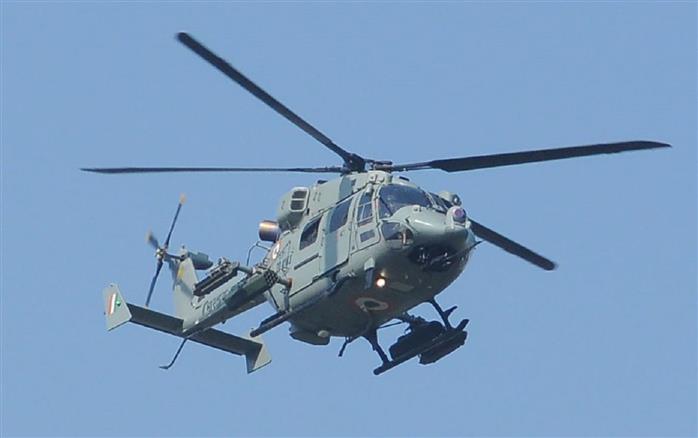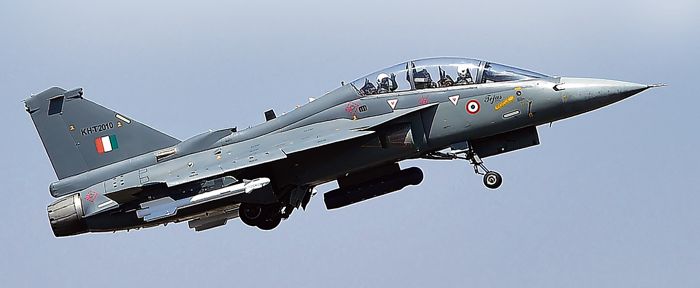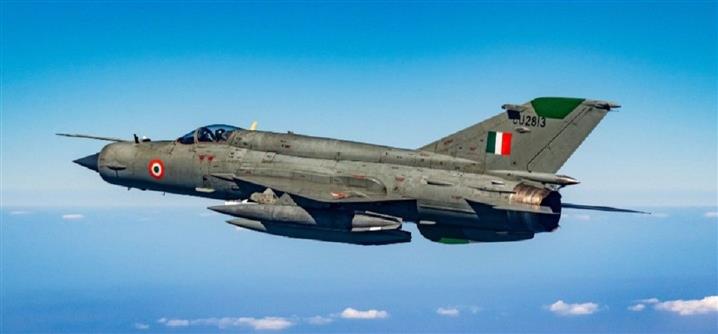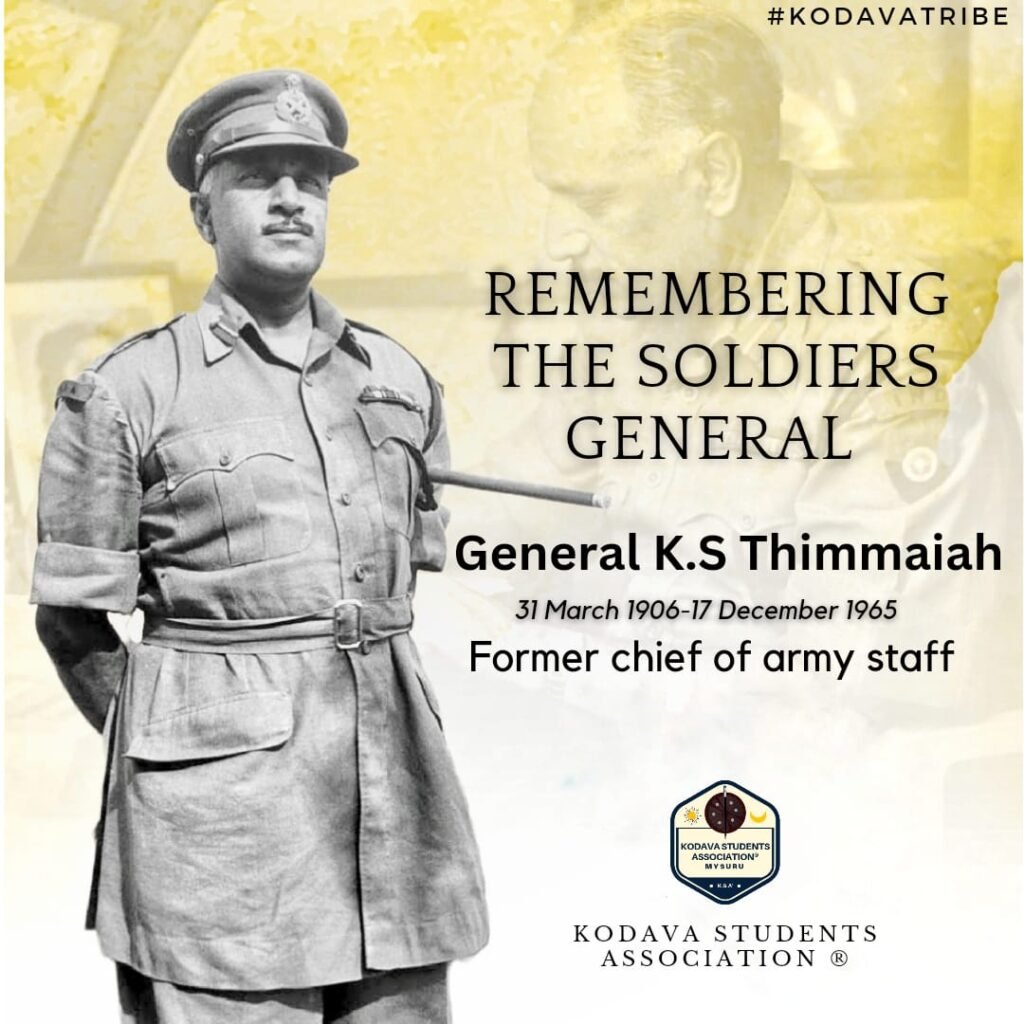
Ajay Banerjee
Bengaluru-headquartered Hindustan Aeronautics Limited (HAL) has, over time, emerged as India’s largest defence public sector undertaking and a harbinger of the country’s military aviation ambitions. As it positions itself as a global player, the crashes and emergency landing of aircraft manufactured and serviced by it, as well as production delays have brought it under the scanner.
The HAL’s flagship indigenous military aviation projects of manufacturing helicopters and fighter jets are facing separate problems and need a firm resolution. The fighter jet programme — making of the Tejas jet and its variants — is suffering from delays, reiterated by a recent report in Parliament. The helicopter programme — making of the Advanced Light Helicopter (ALH) and its variants — has come under the scanner for crashes and forced landings, some due to ‘sudden loss of power’.
A number of sane voices are seeking a review to establish what is causing near-identical problems in the copter.

Officials at the HAL assure that “investigations (recent issues with the copter) are being done by a cross-functional team of experts representing the customers, certification agencies, regulatory bodies and designers from HAL”. Investigations, sources maintain, are underway and these are isolated incidents; “no impact is foreseen on the operations of the fleet”.
Issues with the copters and the delay in making the jets are a test of nerves for the Ministry of Defence and the HAL. Some 284 ALH variants are flying, largely with the Indian Air Force (IAF), the Army, the Navy and the Coast Guard. In the past three weeks, the entire fleet has been checked; this was the second check in six months, the last one being after a crash in October 2022. The latest review conducted by the armed forces, so far, pointed towards ‘material failure’— an aspect which is correctible.
Both projects are aspirational for India, to be self-reliant and to become an exporter. Targets have been set to being a $25 billion domestic military equipment producer, and achieving a Rs 40,000-crore export target by 2026.

Rear Admiral Mukul Asthana (retd), Assistant Chief of Naval Staff (Air), advises: “Don’t pass the buck or blame each other, it would be in national interest if all the involved agencies swiftly and resolutely come together to address the persistent problem.” Air Vice Marshal Manmohan Bahadur (retd), former Additional Director of the Centre for Air Power Studies (CAPS), suggests “major changes in the work ethos of HAL, one that demands and awards excellence and takes corrective action, no matter how unpopular, for shortfalls, if any”.
‘Stability’ to ‘sudden loss of power’
In the past 20 years since the ALH and its variants have been flown by the services, pilots of the armed forces vouched for ‘stability’ of the copter, so much so that the IAF’s aerobatics team, the Sarang, uses the same machine for its gravity-defying flying.
In the past three-four years, however, issues of ‘sudden loss of power’ and ‘control failure’ got reported by pilots flying the ALH. In three years alone, there have been nine such incidents involving crashes and emergency landings. In case of the October 2022 crash in Arunachal Pradesh, the pilots sent out a ‘may-day’ call indicating a technical or mechanical failure.
“The government needs to hold HAL accountable,” avers Bahadur, who has been an IAF copter pilot.
Asthana, who was a naval aviator, adds, “Such failures cannot be allowed to go on, enquiries must go to the root cause plaguing the ALH programme. There have been strong pointers to ‘control failures’ in these accidents.”
Control failure results in the aircraft not responding correctly to the pilot’s inputs; it becomes impossible to control it. HAL officials say they are “confident that our design and production processes are robust, which get updated based on operational feedback”.
After an Indian Navy copter was forced to ‘ditch at sea’ on March 8, the Navy salvaged the copter’s airframe and flight data recorders. Such emergency landings with the airframe intact have happened in the past, too, just this time it was over sea, said a senior official.
Bahadur says flight safety has to permeate every aspect of flying, “starting from the design going to manufacturing stages. An all-agency flight safety review needs to be mandated at regular intervals”.
HAL officials, on their part, maintain that “all flight safety measures are in place, products are safe to operate and we would continue to serve our customers for decades to come”.
The ALH fleet — all have twin-engines — has the following variants: ALH Mark II, ALH Mark III, ALH Mark IV and ALH-WSI. Even the Light Combat Helicopter (LCH) is derived from the same platform and powered by the same engines. After 2011, or the ALH Mark III variant, all copters have the powerful ‘shakti engine’ developed by HAL and French major Turbomeca joint venture. The engine enables the copter to fly up to 21,000 feet.
Ramping up production
The IAF, at present, has 31 squadrons (16-18 planes each) of fighter jets against the mandated need of 42 squadrons to tackle a collusive two-front threat of Pakistan and China. Over the next two years, all the three squadrons of the Soviet-era MiG-21 fighter jets will retire. The Jaguar, MiG-29 and Mirage 2000 jet fleets — all inducted in phases during the 1980s — are slated to retire in batches beyond 2029-30. These four types of jets are about 250 in number and are operating on an extended life-cycle. Alarm bells have been ringing in the IAF as time is running out; it is a five-six year process to procure high-end military technology.
“The issue of the depleting strength of fighter squadrons is well known, I don’t know how the IAF will maintain numbers,” says Bahadur.
From February 2024, for the next 14-15 years (till 2038-39), India needs to produce some 470 fighter jets on its own — 370 for the IAF and 100 twin-engine jets for the Navy. Production of 83 Tejas Mark 1-A jets starts from February next year, to be followed by 108 Tejas Mark II jets, 26 jets of the advanced medium combat aircraft (AMCA) as well as 100 twin-engine deck-based fighters for the Indian Navy. Another order of 50 jets of Tejas Mark 1-A is expected. These numbers are separate from the 114 jets the IAF wants through a global tender to be made in collaboration with a foreign partner in India.
A major upgrade to HAL’s capacities, a resilient supply chain and a focussed approach, is needed. The existing annual production capacity of HAL is 16 jets and is slated to go up to 24 jets per annum with the opening of a new facility at Nashik. A capacity of 40 jets per annum is needed to meet the target of 470 jets, besides export aspirations. HAL sources say that depending on the workload, it will “re-assess and appropriate decisions will be taken to expand in-house capacity and if required, private industry will be engaged for production”.
Dealing with delays
In the past, a delay in making the first 40 Tejas jets left an erroneous impression. The IAF ordered 20 planes under a Rs 2,813-crore contract in 2006 and another 20 planes under a Rs 5,989-crore contract in December 2010. All these 40 were to be delivered by December 2016, but the deliveries were completed only in February this year — seven years behind schedule.
The Standing Committee of Parliament, in its report to the House on March 21 this year, quoted the Chairman and Managing Director of HAL, CB Ananthakrishnan, as saying, “Yes, there have been some delays (in the Tejas programme).” Based on the experience, future design and development programmes will move faster, the CMD told the committee. Defence Secretary Giridhar Aramane said the “delays were not exclusively due to HAL, there were delays at various levels”. He cited the sanctions imposed on India after the 1998 nuclear tests.
Can HAL correct this impression of delays? Rear Admiral Asthana suggests having “joint participation and a multi-agency body to oversee the Tejas production and timely development of the naval fighter”. This body should have the HAL, government agencies and the armed forces, he suggests.
Foreign manufacturers in the US, UK and France have on board several retired pilots and military engineers in various roles. The HAL CMD said at Aero India in February, “We are on schedule to deliver the first Tejas Mark 1A in February 2024.” The manufacturing capacities have been augmented, delivery will be ahead of schedule, he claimed, adding that “delays are a thing of the past, we have sufficient supply chain and delivery capacity”. HAL officials say a sturdy vendor base of private sector as well as PSUs has been developed. Private vendors are engaged in manufacturing and supply of parts, sub-assemblies and major structure modules. Dynamatic Technologies, VEM Technologies and Alpha Tocol make various parts of the Tejas fuselage. Larsen & Toubro makes the wings, while TASL makes the fin and rudder assembly.
MiG-21: fixing accountability
Over the years, crashes of the MiG-21 jets have given a bad name to the country, IAF and HAL. India has sourced 874 MiG-21s — including multiple variants and upgrades — since 1963. HAL licence-produced 657 of these in India.
In all, 490 MiG-21s have crashed, killing more than 170 pilots. Old-timers recall that five MiG-21s crashed within a span of three months from April 9, 1985 to July 15, 1985. The IAF grounded 100 of the MiG-21M jets for three months. Other variants (the FL and Bis) were checked in phases. A blame game followed. All the crashed MiGs were produced by HAL under licence from the erstwhile Soviet Union between 1973 and 1981. HAL accused the IAF of ‘lack of proper’ maintenance while the IAF questioned HAL’s ‘quality control and overhaul procedures’.
The years 2001 and 2002 saw 24 crashes of MiG-21s. Moscow accused India of sourcing spares from ‘dubious sources’. Andrei Y Belyaninov, the Director General of Rosoboronexport, Russia’s nodal government-owned company for export of weaponry, was quoted as saying, “Just 10 per cent of the spares came from fresh production in Russia. The rest were supplied by companies which were sourcing spares from outdated stocks in Ukraine, Kazakhstan and other former Soviet Union republics.”
Accusations and counter-accusations were levelled even as the MiG-21s kept crashing. No probe was conducted to apportion responsibility, if any, of the HAL, the IAF or the Soviet Union.
Despite a hue and cry, no responsibility was fixed of the Ministry of Defence for the delay in sourcing replacements.
In Service, after service
- Some of the world’s biggest arms companies like Lockheed Martin, Boeing, Airbus, BAE Systems, Naval Group of France, use the services of retired Generals, Admirals and Air Marshals of their countries to further their products in the international market. The retired soldiers use their personal connect with uniformed personnel of friendly countries to tell them about a plane, submarine, warship, missile, artillery guns.
- Indian private corporate entities have taken on board several retired senior officers as well.
- The MoD’s nine PSUs and also the seven entities newly created out of the Ordnance Factory Board (OFB) have a rare retired soldier in a cutting-edge position.
HAL operations
- Starting off as Hindustan Aircraft Limited in 1940, it was renamed Hindustan Aeronautics Limited in 1964. MoD holds 75.15% stake in the defence PSU, which is publically listed.
- In 2022-23, the company recorded its highest-ever revenue from operations — Rs 26,500 crore.
- The order book stands at Rs 82,000 crore, with additional orders of almost Rs 56,000 crore in the pipeline.
ALH crashes in 3 years
- May 9, 2020 Army Aviation, North Sikkim | 5 injured
- January 25, 2021 Army Aviation, Kathua (J&K) | One pilot died
- August 3, 2021 Army Aviation, Ranjit Sagar Dam, Punjab | Pilots Lt Col AS Baath & Capt Jayant Joshi died
- October 22, 2022 Army Aviation, Migging in Arunachal Pradesh | Five dead, including pilots Major Vikas Bhambhu and Major Mustafa Bohara | Three others also died: Sepoy Aswin KV, Havildar Biresh Sinha and Naik Rohitashva Kumar.
Emergency landings
- October 8, 2020 IAF, near Saharanpur | No injury
- March 6, 2021 Army Aviation with two three-star officers — Lt Gen Raj Shukla and South Western Air Command Chief Air Marshal SK Ghotia — on board, near Kheda, Gujarat | No injury
- January 2, 2022 Army Aviation near Jind, Haryana | No injury
- March 8, 2023 Forced ditching at sea, Indian Navy | No injury
- March 26, 2023 Coast Guard at airport in Kochi |No injury













































































